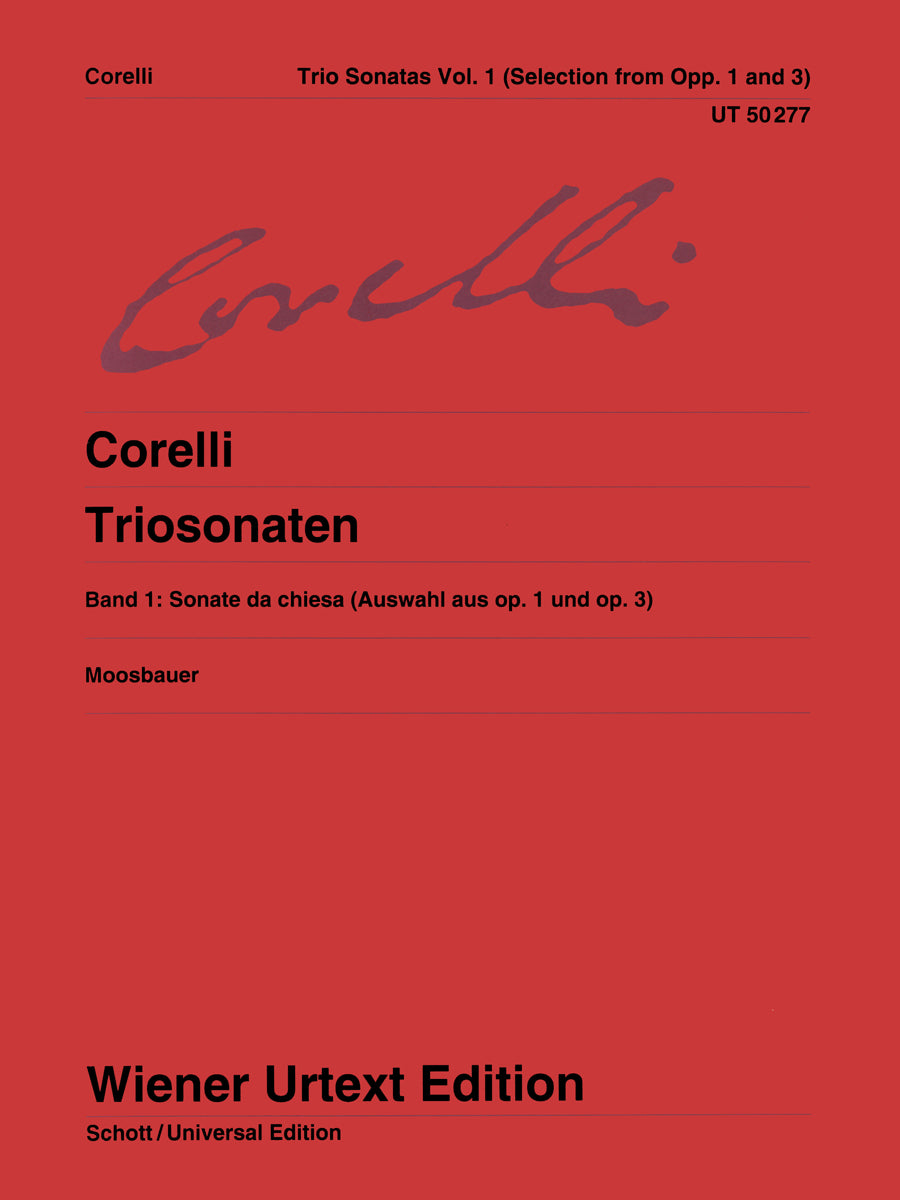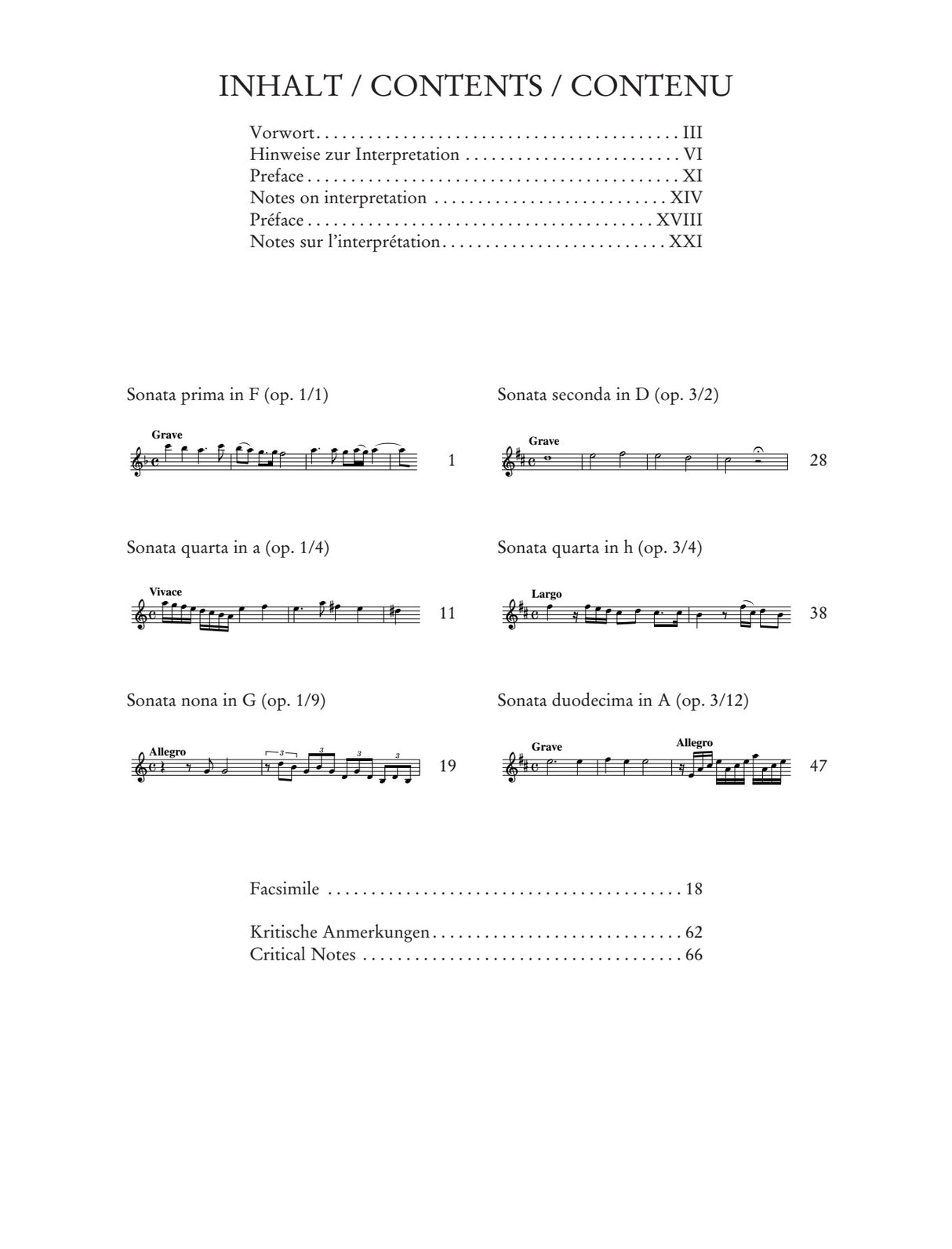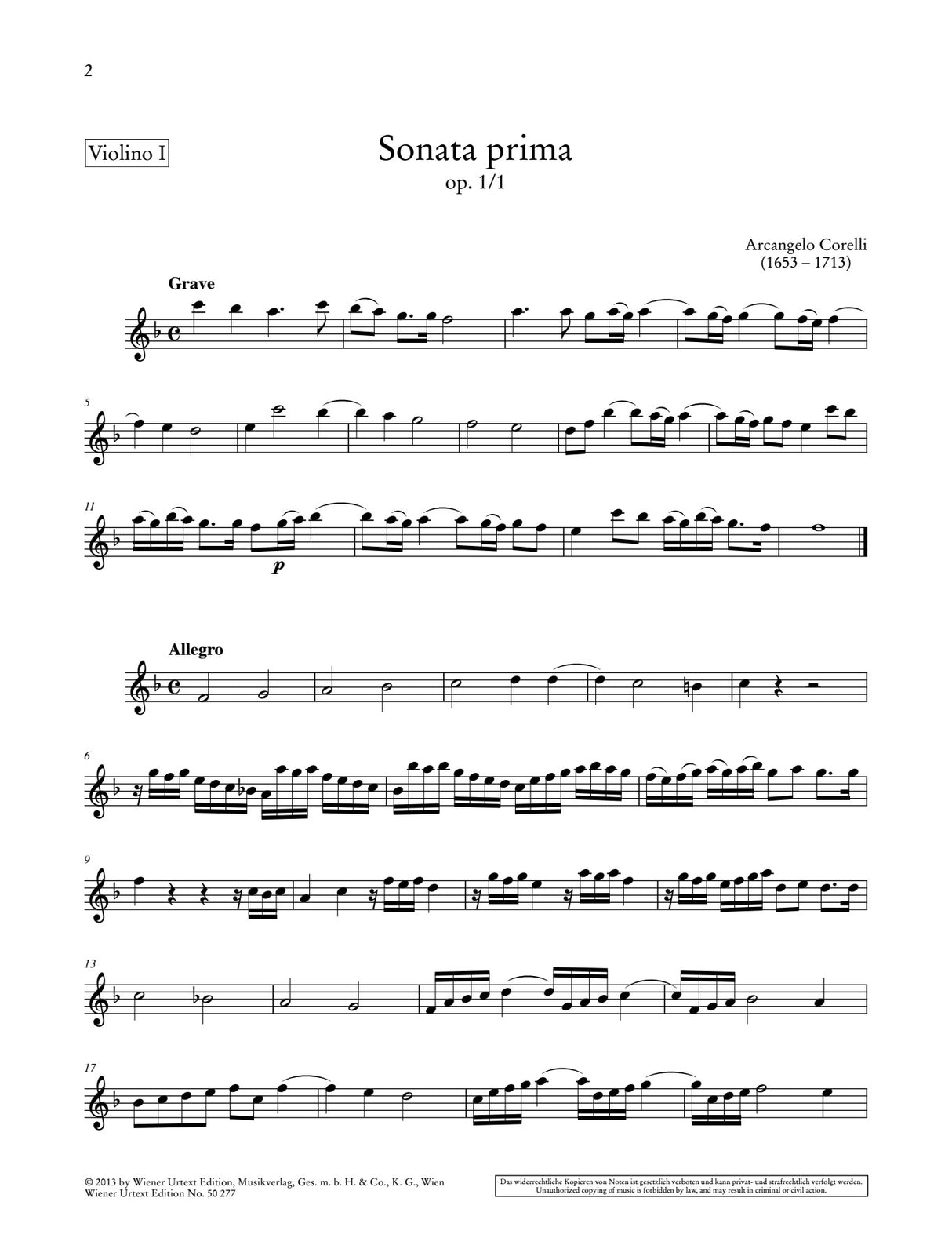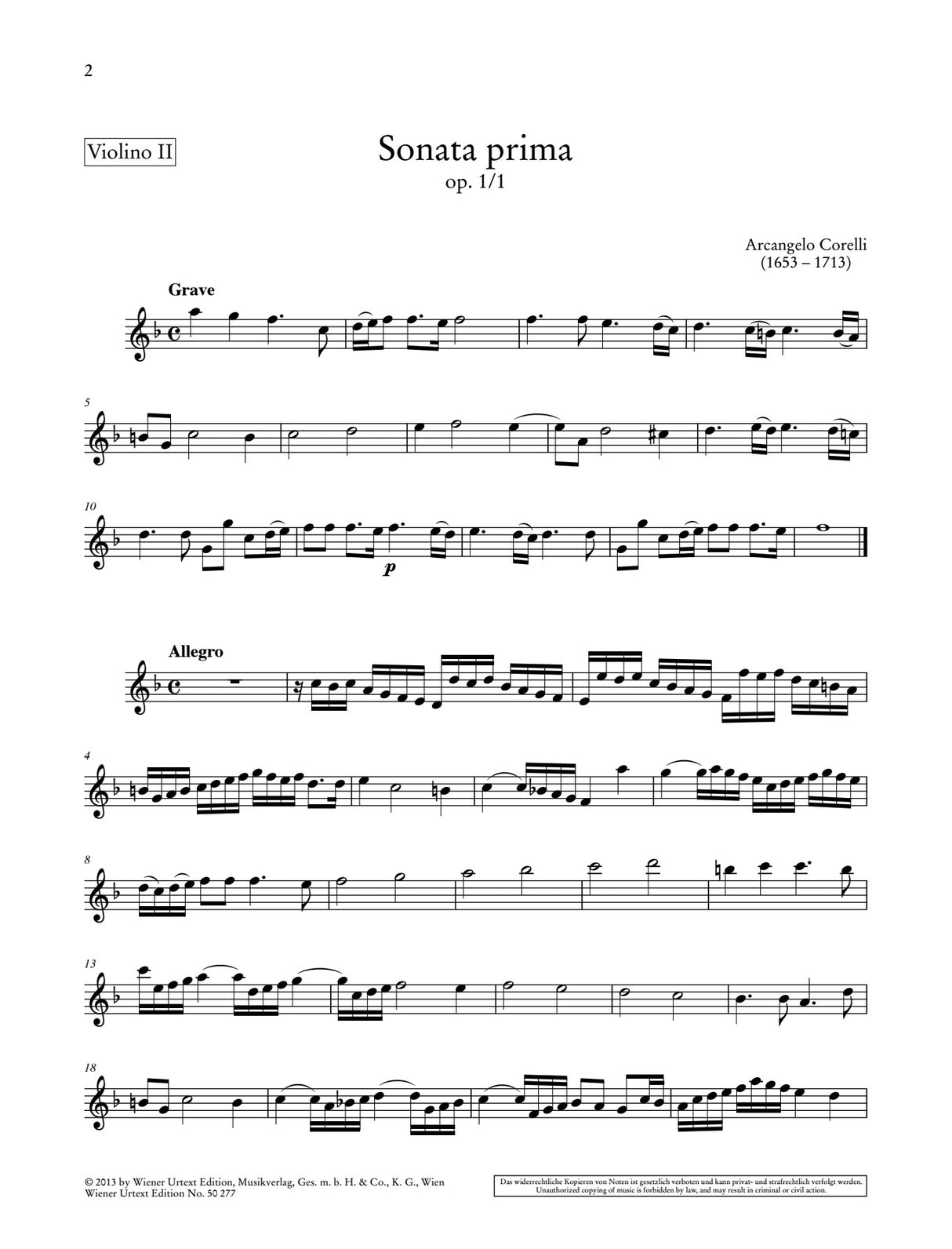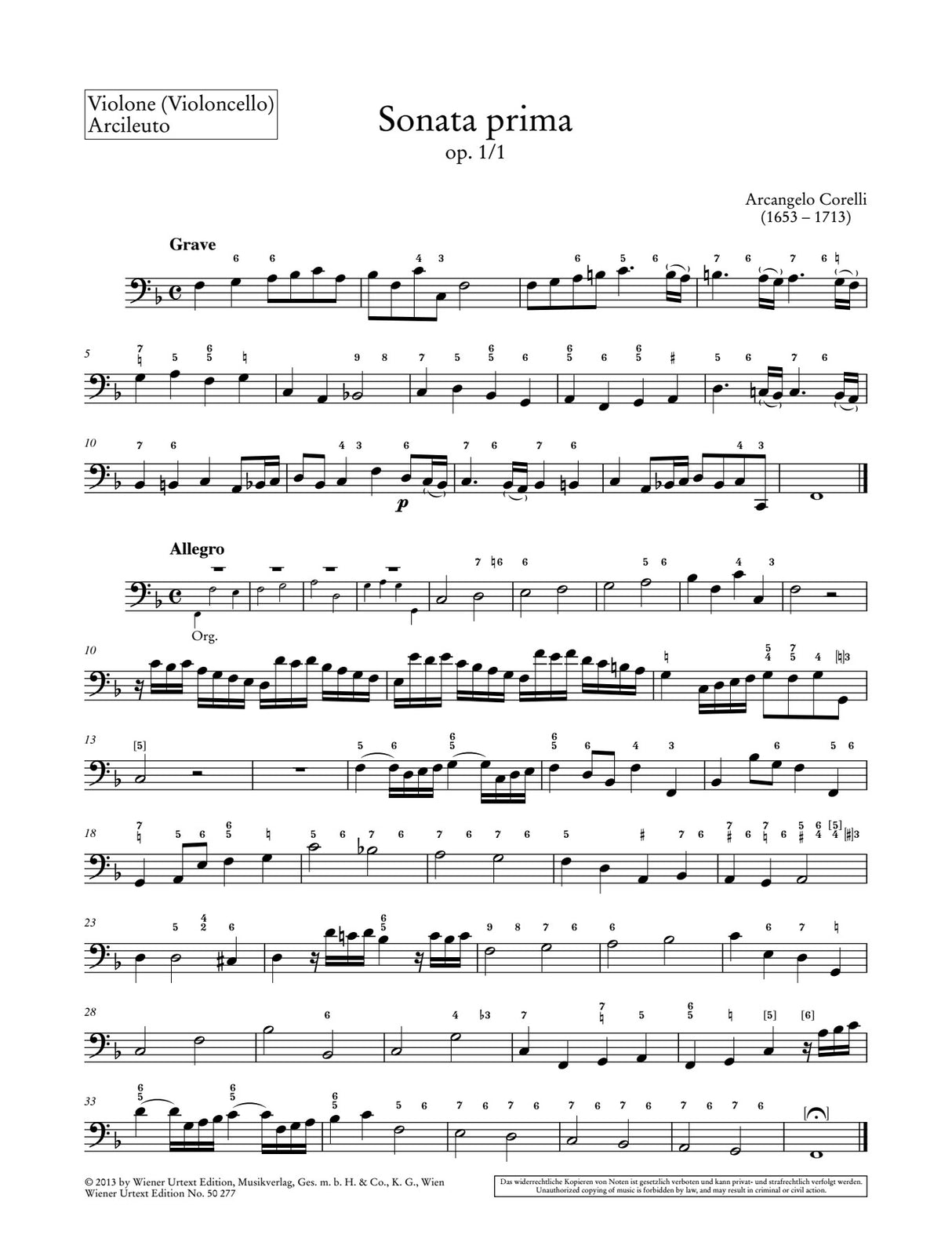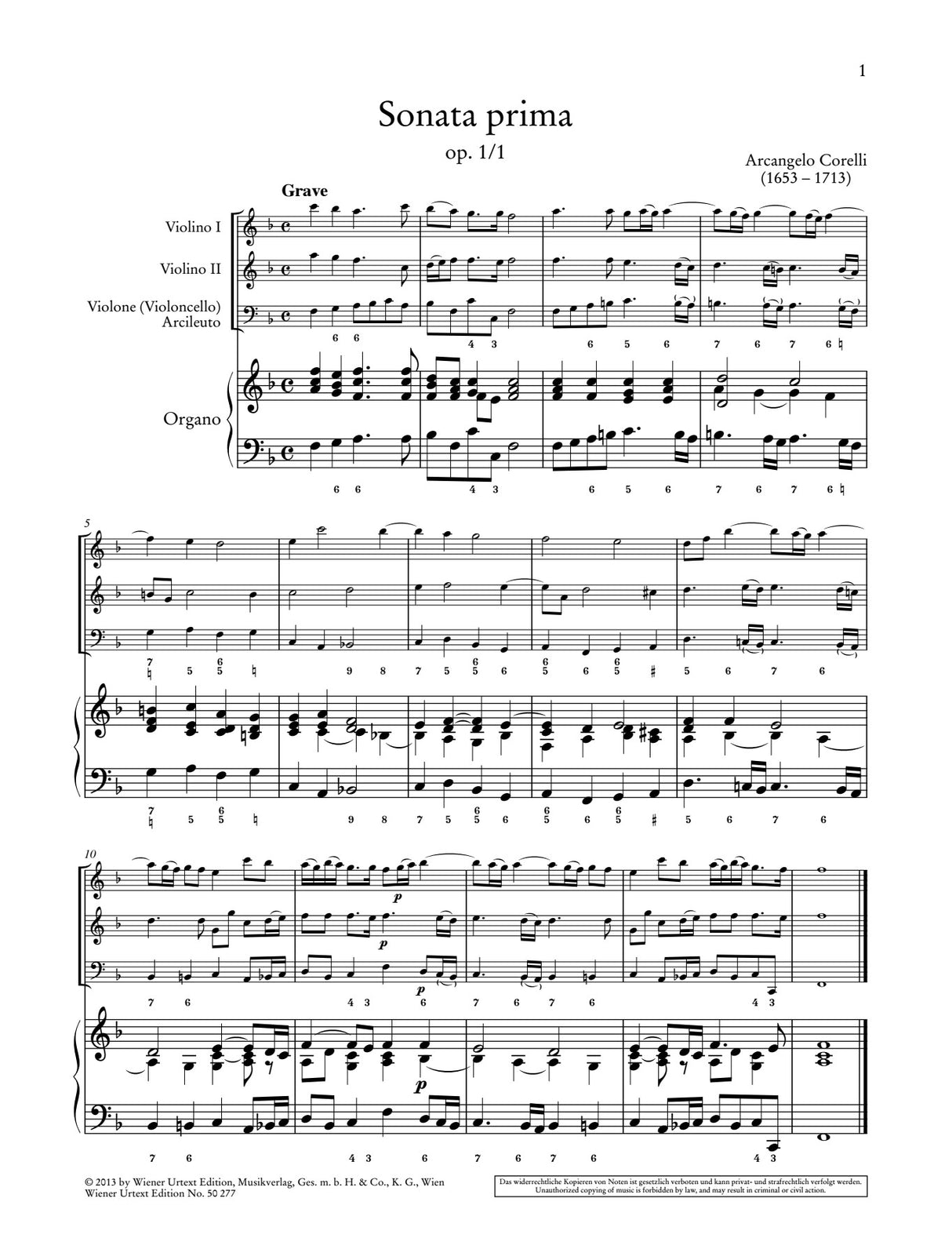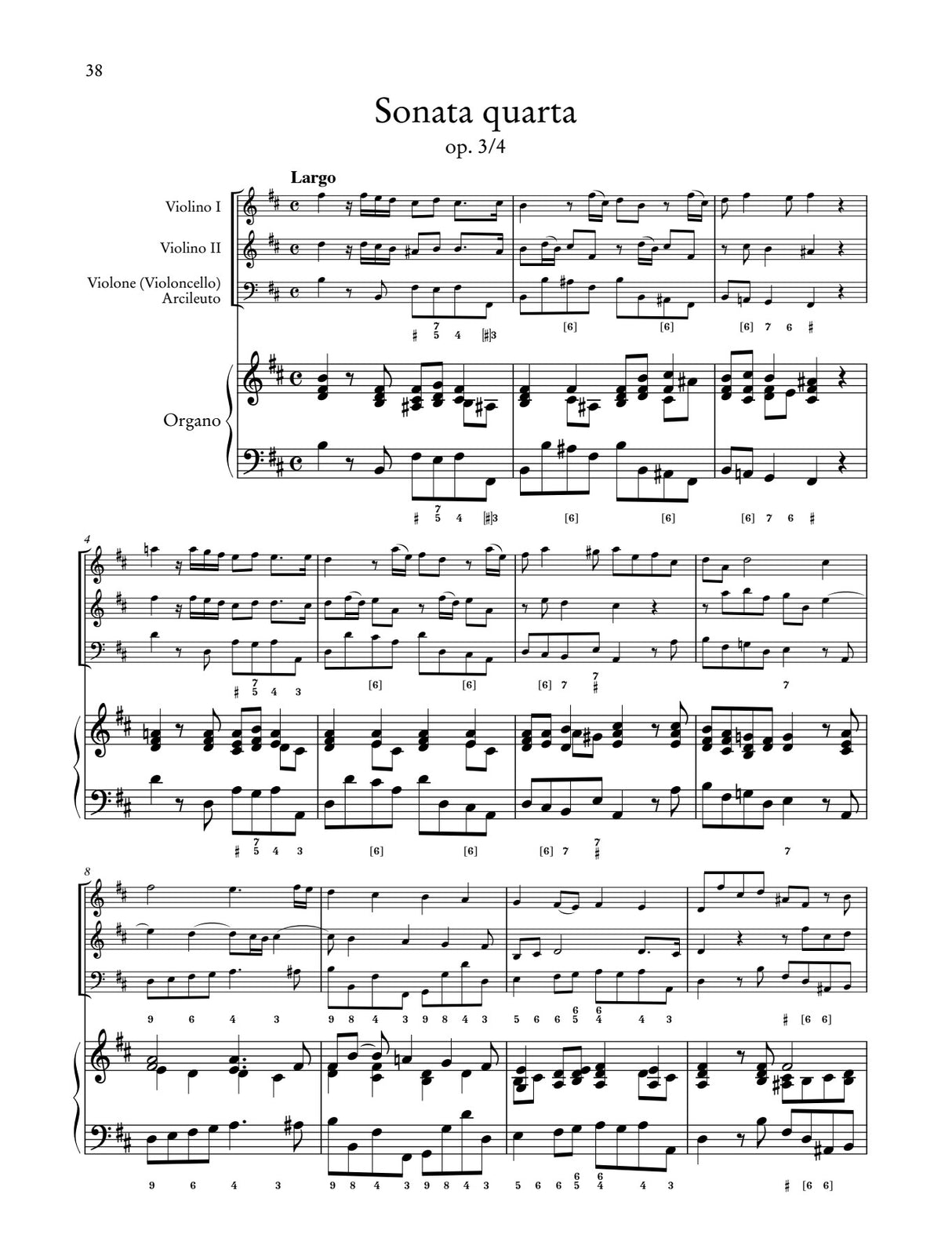Corelli: Trio Sonatas - Volume 1 (Sonata da chiesa from Op. 1 & 3)
In stock and typically ships within 1 business day.
- Composer: Arcangelo Corelli (1653-1713)
- Editor: Bernhard Moosbauer
- Format: Set of Parts
- Instrumentation (this edition): Cello, Organ, Violin I, Violin II
- Originally for: Basso continuo, Violin I, Violin II
- ISMN:
- Size: 9.1 x 11.9 inches
- Pages: 151
- Urtext / Critical Edition
Description
Only few works in music history can adorn themselves with the attribute 'epoch-making'. Arcangelo Corelli's trio sonatas are among them. with his Sonata da chiesa, Op. 1 and Sonata da camera, Op. 2, Corelli, in 1681 and 1685 respectively, laid the foundation for a genre which was to become the authoritative chamber music genre for almost 100 years. It was only in 1781 that it was superseded by Joseph Haydn's String Quartets, Op. 33, which also constituted a work group of epoch-making significance. From the historical point of view, even the string quartet is a 'child' of the trio sonata; thus, Corelli's significance as founder of the European chamber music genre cannot be valued too highly.
In addition to parts for the melodic instruments, the new edition also contains a continuo score with realised, easily playable basso continuo. On the basis of this material and due to the medium technical demands, the edition is perfectly suitable for starting to play chamber music pieces.
Works:
- Trio Sonata in F Major, Op. 1, No. 1
- Trio Sonata in A Minor, Op. 1, No. 4
- Trio Sonata in G Major, Op. 1, No. 9
- Trio Sonata in D Major, Op. 3, No. 2
- Trio Sonata in B Minor, Op. 3, No. 4
- Trio Sonata in A Major, Op. 3, No. 12
Publishers use a lot of words to describe what they sell, and we know it can be confusing. We've tried to be as clear as possible to make sure you get exactly what you are looking for. Below are descriptions of the terms that we use to describe the various formats that music often comes in.
Choral Score
A score for vocalists that only contains the vocal lines. The instrumental parts are not there for reference. Generally, cheaper than a vocal score and requires multiple copies for purchase.
Facsimile
Reproductions of the original hand-written scores from the composer.
Full Score
For ensemble music, this indicates that the edition contains all parts on a single system (there are not separate parts for each player). In larger ensembles, this is for the conductor.
Hardcover
Hardbound. Generally either linen-covered or half-leather.
Orchestral Parts
Similar to a wind set, this is a collection of parts. In the case of strings, the numbers listed are the number of copies included, though generally these are available individually (often with minimum quantities required).
Paperback
When publishers offer multiple bindings (e.g. hardcover) or study scores, this is the "standard" version. If you're planning to play the music, this is probably what you want.
Performance / Playing Score
A score of the music containing all parts on one system, intended for players to share. There are not separate parts for each player.
Set of Parts
For ensemble music, this indicates that there are separate individual parts for each player.
Solo Part with Piano Reduction
For solo pieces with orchestra, this is a version that contains a piano reduction of the orchestra parts. For piano pieces, two copies are typically needed for performance.
Study Score
A small (think choral size) copy of the complete score meant for studying, and not playing. They make great add-ons when learning concertos and small chamber works.
Vocal Score
A score prepared for vocalists that includes the piano/organ part or a reduction of the instrumental parts.
Wind Set
For orchestral music, this is a collection of wind and percussion parts. The specific quantities of each instrument are notated.
With Audio
In addition to the printed music, the edition contains recordings of the pieces. This may be an included CD, or access to files on the internet.
With / Without Fingering (Markings)
Some publishers prepare two copies - a pure Urtext edition that includes no fingering (or bowing) suggestions and a lightly edited version that includes a minimal number of editorial markings.
